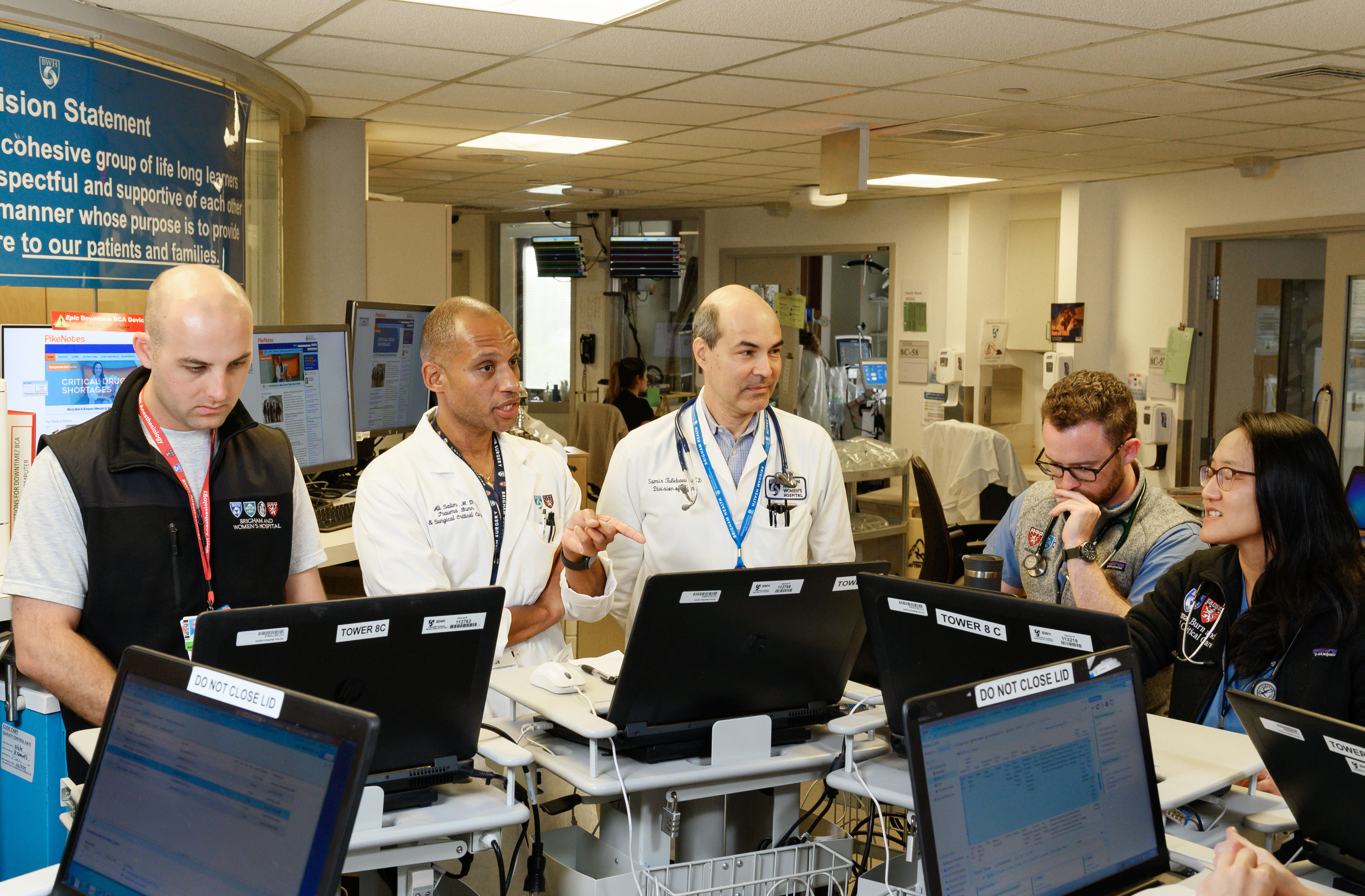
An Interview with Ali Salim, MD
Ali Salim, MD, is the medical director of the Stepping Strong Injury Prevention Program, co-medical director of The Gillian Reny Stepping Strong Center for Trauma Innovation, and chief of the Division of Trauma, Burn, and Surgical Critical Care at the Brigham. In this interview, Salim talked to Cheryl Lang and Donna Woonteiler about launching the injury prevention program, how communities can work together to reduce the burden of injury, and long-term goals.
Q: Congratulations on the 2020 launch of the Stepping Strong Injury Prevention Program. Tell us a little a bit about your background, and why you chose to focus on the care of acutely ill trauma patients.
A: I grew in New York, went to high school in Pennsylvania, and got my bachelor’s at Duke University. As a freshman in college, I had to walk by Duke University Hospital to get to the main campus. I had never been exposed to medicine before, and was very curious, so I decided to volunteer in the emergency room. While I was there, I watched and learned—and that experience ultimately led to my focus on the care and outcomes of trauma patients. I eventually went on to get my master’s degree at Columbia
University and my medical degree from the Howard University College of Medicine in Washington, DC. I then pursued a fellowship in trauma and surgical critical care at the University of Southern California Keck School of Medicine.
Q: Why is it necessary for the Brigham to have an injury prevention program and how did the Stepping Strong Injury Prevention Program get started?
A: To start with, let’s talk about the data. Traumatic injury is the leading cause of death for children and adults up to the age of 45 in the U.S.—a shocking statistic that affects everyone, regardless of age, race, or economic status.
On a more personal level, as a trauma surgeon, every day I see people come to the Brigham with severe traumatic injuries that are completely preventable. So there is a real need to educate the community to implement evidence-based practices that reduce the numbers of traumatic injuries in Boston and beyond.
Finally, before there was a center for trauma innovation, the Brigham already had a robust infrastructure for areas such as falls prevention, substance abuse, and violence prevention. Since the Stepping Strong Center was already focused on improving outcomes for patients with traumatic injuries, it made sense to add injury prevention to the portfolio.
Q: Taking a step back—how do you define injury prevention?
A: Broadly speaking, injury prevention is an effort to reduce the numbers and severity of traumatic injuries. In the past, injuries were considered accidents that were random or left up to chance. That perspective has changed dramatically. Modern injury prevention is a holistic practice that focuses on predictable factors that reduce the burden of injury through the “5 Es”: Engineering, Enforcement, Economics, Education, and Exploration.
Q: Can you give us an example of the 5Es in practice?
A: A classic example is the way we use seatbelts to enforce traffic safety. Not only have we engineered cars to include seatbelts; in Massachusetts and other states, there are laws to enforce their use. We use fines as economic incentives so people are more apt to use a seatbelt when they drive, we educate the public on the benefits of seatbelt use, and we are constantly exploring new ways to make cars and roadways safer.
Q: How does the Injury Prevention program aim to reduce the burden of injuries?
A: We aim to reduce the burden of injury through community outreach, research of best practices, and training healthcare professionals to build the field of injury prevention. In addition to those three, we are also beginning to get more involved in injury prevention policy work and advocacy. Through these mechanisms, we aim to translate knowledge into practice, making the world a safer place free from the burden of injury.
Q: What is the long-term goal of the Injury Prevention program?
A: Our goal is to serve as a dynamic hub for injury prevention efforts in New England. To that end, we are pursuing a three-pronged approach through community outreach, research of best practices, and educating healthcare professionals. But for this to succeed, we must first work to replace the silos that exist in the injury prevention field with multidisciplinary collaboration.
I’m pleased to say we have made great progress at the center through initiatives such as our quarterly Lunch & Learns with community partners, collaborating with Boston-area trauma centers to work on pedestrian safety, granting an annual Stepping Strong Innovator Award to an injury prevention researcher, and empowering community members to prevent suicide and use tourniquets to stop the bleed.
Our ultimate goal is to become a CDC-funded Injury Prevention Center—and this is something we will pursue in CDC’s next grant cycle.
Q: Thanks so much for speaking to us today. Any last thoughts?
A: I’d like to thank our community partners and stakeholders across the Mass General Brigham system for their dedication and collaboration. May is Trauma Awareness month, and I encourage everyone to do their part in preventing injuries. Don’t text and drive. Follow best practices to prevent falls. Childproof your house. Run a road race with Stepping Strong to support our research. And as always, we invite you to engage with us! Learn more about our work at the Stepping Strong Injury Prevention program through our website, newsletters, and three social media channels: Twitter, Instagram, and Facebook.
